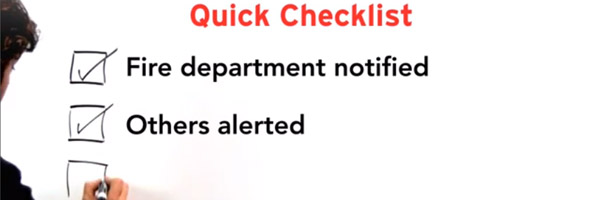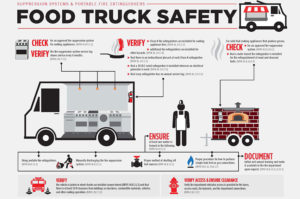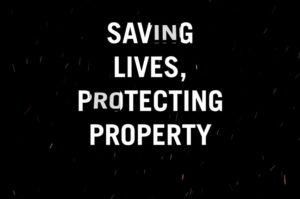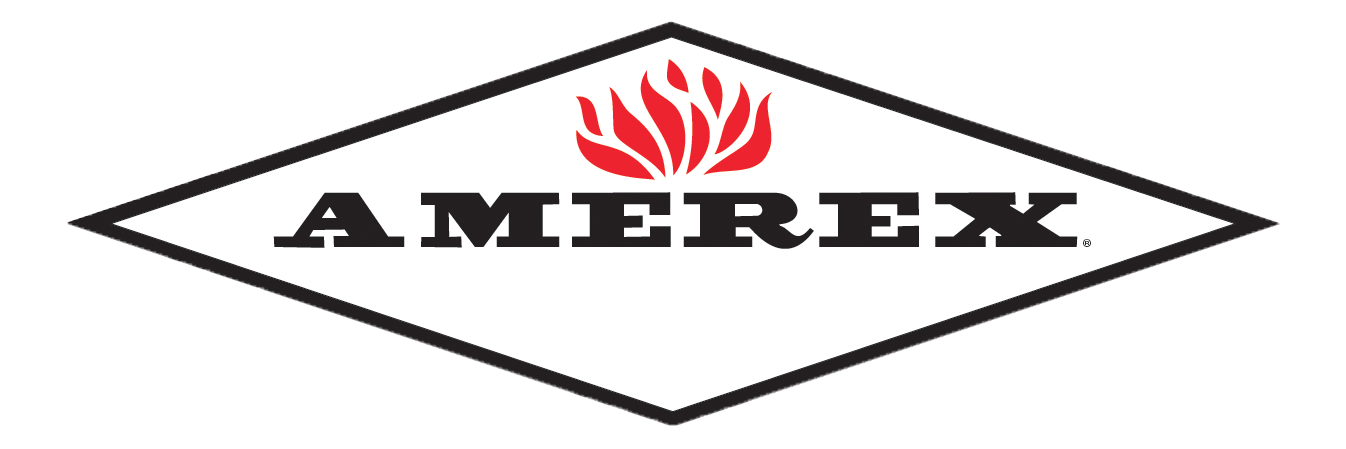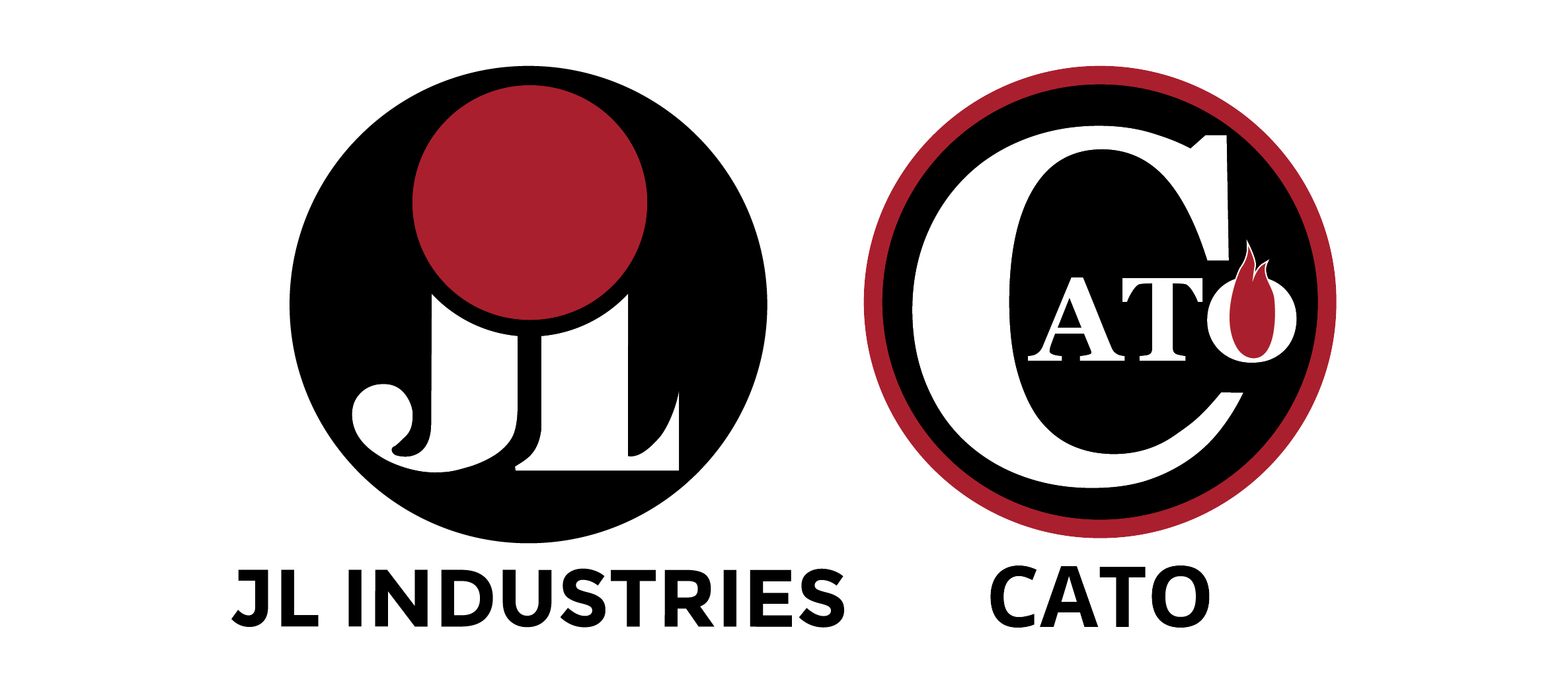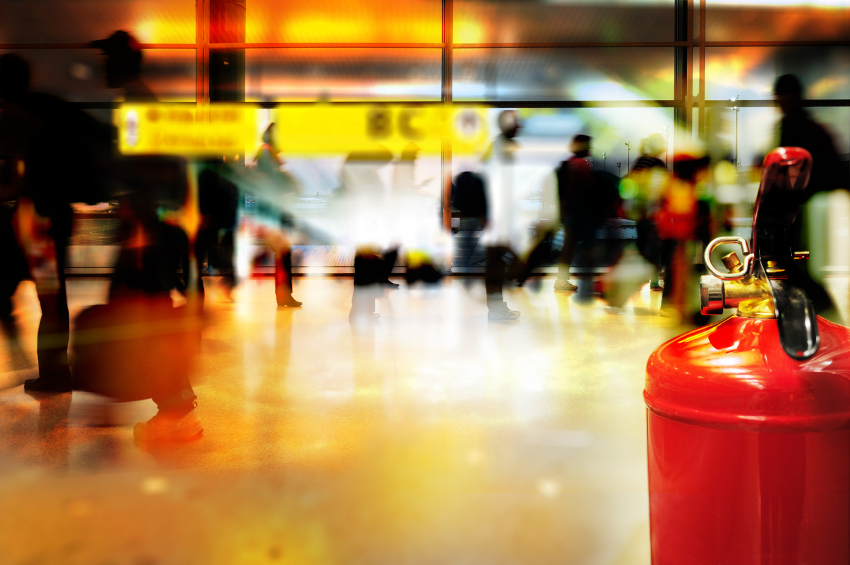
Portable Fire Extinguishers
The Fire Triangle
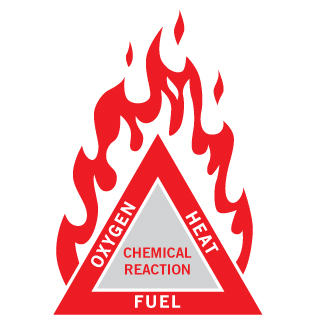
This is The Fire Triangle. Actually, it’s a tetrahedron, because there are four elements that must be present for a fire to exist:
- Oxygen to sustain combustion
- Heat to raise the material to its ignition temperature
- Fuel to support the combustion
- Chemical reaction between the other three elements
Remove any one of the four elements to extinguish the fire.
The concept of Fire Protection is based upon keeping these four elements separate.
Types of Fires
Not all fires are the same. Per NFPA 10, burning may be classified into one or more of the following fire classes and your fire protection specialist will select the right fire extinguisher size and agent for the hazard.
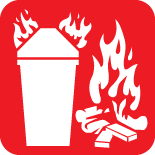
Class A Fires
Fires in ordinary combustibles, such as wood, paper, cloth, rubber and many plastics.
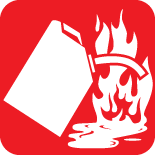
Class B Fires
Fires in flammable liquids—such as gasoline, petroleum greases, tars, oils, oil-based paints, solvents and alcohols—or flammable gases, propane and butane.
DOES NOT include fires involving cooking oils and grease.
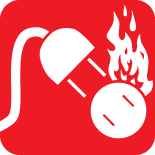
Class C Fires
Fires involving energized electrical equipment, such as computers, servers, motors, transformers and appliances. Remove the power and a Class C fire becomes one of the other classes of fire.

Class D Fires
Fires in combustible metals, such as magnesium, titanium, zirconium, sodium, lithium and potassium.
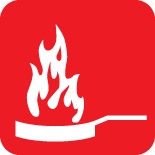
Class K Fires
Fires in cooking oils and greases, such as animal and vegetable fats.
Some types of fire extinguishing agents can be used on more than one class of fire. Others have warnings where it would be dangerous for the operator to use on a particular fire extinguishing agent.
Types of Fire Extinguishers
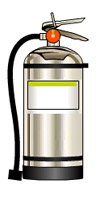
Wet Chemical Fire Extinguishers
Wet chemical is an agent that extinguishes the fire by removing the heat of the fire triangle and prevents reignition by creating a barrier between the oxygen and fuel elements.
Wet chemical or Class K extinguishers were developed for modern, high efficiency deep fat fryers in commercial cooking operations. Some may also be used on Class A fires in commercial kitchens.
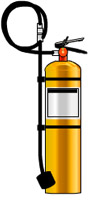
Dry Powder Fire Extinguishers
Dry powder extinguishers are similar to dry chemical extinguishers except that they extinguish the fire by separating the fuel from the oxygen element or by removing the heat element of the fire triangle.
Dry powder extinguishers are for Class D or combustible metal fires ONLY. They are ineffective on all other classes of fires.
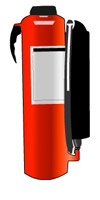
Cartridge Operated Dry Chemical Fire Extinguishers
Cartridge operated dry chemical fire extinguishers extinguish the fire primarily by interrupting the chemical reaction of the fire triangle.
Like the stored pressure dry chemical extinguishers, the multipurpose dry chemical is effective on Class A, B and C fires. This agent also works by creating a barrier between the oxygen element and the fuel element on Class A fires.
Ordinary dry chemical is for Class B and C fires only. It is important to use the correct extinguisher for the type of fuel! Using the incorrect agent can allow the fire to reignite after apparently being extinguished successfully.
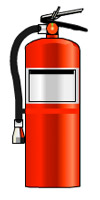
Clean Agent Fire Extinguishers
Halogenated or clean agent extinguishers include the halon agents as well as the newer and less ozone depleting halocarbon agents. They extinguish the fire by interrupting the chemical reaction and/or removing heat from the fire triangle.
Clean agent extinguishers are effective on Class A, B and C fires. Smaller sized handheld extinguishers are not large enough to obtain a 1A rating and may carry only a Class B and C rating.
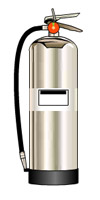
Water and Foam Fire Extinguishers
Water and foam fire extinguishers extinguish the fire by taking away the heat element of the fire triangle. Foam agents also separate the oxygen element from the other elements.
Water extinguishers are for Class A fires only; they should not be used on Class B or C fires. The discharge stream could spread the flammable liquid in a Class B fire or could create a shock hazard on a Class C fire.

Dry Chemical Fire Extinguishers
Dry chemical fire extinguishers extinguish the fire primarily by interrupting the chemical reaction of the fire triangle.
The most widely used type of fire extinguisher is the multipurpose dry chemical that is effective on Class A, B, and C fires. This agent also works by creating a barrier between the oxygen element and the fuel element on Class A fires.
Ordinary dry chemical is for Class B and C fires only. It is important to use the correct extinguisher for the type of fuel! Using the incorrect agent can allow the fire to re-ignite after apparently being extinguished successfully.
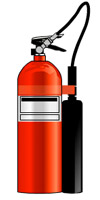
Carbon Dioxide Fire Extinguishers
Carbon dioxide fire extinguishers extinguish fire by taking away the oxygen element of the fire triangle, and by removing the heat with a very cold discharge.
Carbon dioxide extinguishers can be used on Class B and C fires. They are usually ineffective on Class A fires.

Water Mist Fire Extinguishers
Water mist extinguishers put out fires by taking away the heat element of the fire triangle. They are an alternative to the clean agent extinguishers where contamination is a concern.
Water mist extinguishers are primarily for Class A fires, although they are safe for use on Class C fires as well.
The Rules for Fighting Fires
Just remember the three A’s
ACTIVATE the building alarm system or notify the fire department by calling 911. Or, have someone else do this for you.
ASSIST any persons in immediate danger, or those incapable on their own, to exit the building, without risk to yourself.
ATTEMPT to extinguish the fire ONLY AFTER activating the building alarm system and assisting any persons in immediate danger.
Only fight a fire if:
- The fire is small and contained
- You are safe from toxic smoke
- You have a means of escape
- Your instincts tell you it’s OK
How to Use a Fire Extinguisher
It is important to know the locations and the types of extinguishers in your workplace prior to actually using one.
Fire extinguishers can be heavy, so it’s a good idea to practice picking up and holding an extinguisher to get an idea of the weight and feel.
Take time to read the operating instructions and warnings found on the fire extinguisher label. Not all fire extinguishers look alike.
Practice releasing the discharge hose or horn and aiming it at the base of an imagined fire. Do not pull the pin or squeeze the lever. This will break the extinguisher seal and cause it to lose pressure.
- Pull the pin.
- Aim the nozzle or hose at the base of the fire from the recommended safe distance.
- Squeeze the operating lever to discharge the fire extinguishing agent.
- Sweep the nozzle or hose from side to side until the fire is out starting at the recommended distance.
Watch our video for more information and a visual demonstration.
Fire Extinguisher Inspection and Maintenance
Like any mechanical device, fire extinguishers must be maintained on a regular basis to ensure their proper operation. You, the owner or occupant of the property where the fire extinguishers are located, are responsible for arranging your fire extinguishers’ maintenance.
Fire extinguishers must be inspected or given a “quick check” every 30 days. For most extinguishers, this is a job that you can easily do by locating the extinguishers in your workplace and answering the three questions below.
- Is the extinguisher in the correct location?
- Is it visible and accessible?
- Does the gauge or pressure indicator show the correct pressure?
Fire extinguishers must also be maintained annually in accordance with local, state, and national codes and regulations. This is a thorough examination of the fire extinguisher’s mechanical parts, fire extinguishing agent and the expellant gas.
Your fire equipment professional is the ideal person to perform the annual maintenance because they have the appropriate servicing manuals, tools, recharge materials, parts, lubricants, and the necessary training and experience.
Fire Safety Map
How safe are you? Does your state require fire extinguishers throughout most buildings?
Every state has a State Fire Code with a section on fire extinguisher requirements. For an overview of what state fire codes are based on and to see if your state has made enhancements to its fire code, checkout our Interactive Fire Safety Map.
Portable Fire Extinguishers Reduce Carbon Footprint of Building Fires
Did you know that portable fire extinguishers can reduce fire related carbon emissions of a building, beyond the effectiveness of sprinklers on their own, by 93.6%? When sprinklers and portable fire extinguishers are used together, fire related carbon emissions are reduced by 99%.
Learn more in a new study from the respected fire protection engineering firm Jensen Hughes that was commissioned by the Fire Equipment Manufacturers’ Association’s Government Relations Committee (FEMA GRC): A Review of the Impact of Fire Extinguishers in Reducing the Carbon Footprint of Building Fires.
Learn More and Test Your Knowledge
Test your knowledge about fire safety and fire protection equipment. How much do you know?
View fire safety infographics created by the Fire Equipment Manufacturers’ Association.
Watch fire safety videos produced by the Fire Equipment Manufacturers’ Association.
| A Review of the Impact of Fire Extinguishers in Reducing the Carbon Footprint of Building Fires (PDF) A scientific study of the role of portable fire extinguishers in reducing the carbon footprint of a fire in a sprinklered building by Jensen Hughes, a fire protection engineering firm. |
|
| Use of Dry Chemical Fire Extinguishers (PDF) A whitepaper on the use of dry chemical fire extinguishers in locations where electronics and high value assets are located. |
|
| Portable Fire Extinguishers are Effective, Easy to Use, Safe and Cost Efficient (PDF) Data from across the country backs up the fact that portable fire extinguishers are effective, easy to use, safe and cost-efficient. |
|
| Effective Use of Portable Fire Extinguishers by Ordinary People – Fact Sheet – WPI/EKU Study (PDF) A summary of the first academic study of an individual’s ability to use a fire extinguisher from Eastern Kentucky University (EKU) and Worcester Polytechnic Institute (WPI). |
|
| Effective Use of Portable Fire Extinguishers by Ordinary People – WPI/EKU Study (PDF) An academic study of an individual’s ability to use a fire extinguisher, from Eastern Kentucky University (EKU) and Worcester Polytechnic Institute (WPI). |
|
| Life Cycle Cost Study of Portable Fire Extinguishers – Fact Sheet – RJA Study (PDF) A summary of the study from Rolf Jensen and Assoc., Fire Protection Consultants, performed on the life cycle cost of portable fire extinguishers. |
|
| Life Cycle Cost Study of Portable Fire Extinguishers – RJA Study (PDF) A life cycle cost analysis of portable fire extinguishers by Rolf Jensen and Associates, Fire Protection Consultants. |
|
| Decision Tree for the Replacement of Fire Extinguishers in the Field (PDF) How to evaluate whether a fire extinguisher needs replacement. |
|
| Removal from Service of Obsolete Fire Extinguishers (PDF) A guide for the removal of obsolete fire extinguishers from service. |
|
| Electronic Monitoring: Life Cycle Cost Analysis of Electronic Monitoring of Portable Fire Extinguishers – RJA Analysis (PDF) An economic analysis of electronic monitoring of portable fire extinguishers by Rolf Jensen and Associates, Fire Protection Consultants. |
|
A supplemental report to an economic analysis of electronic monitoring of portable fire extinguishers by Carl F. Baldassarra, P.E., FSFPE. |
